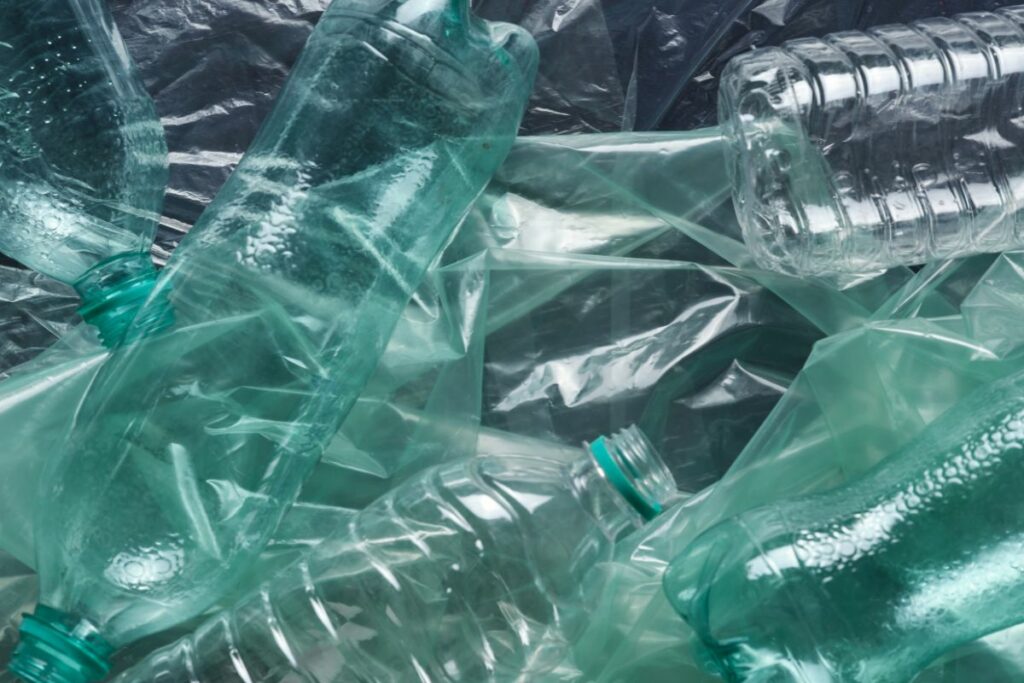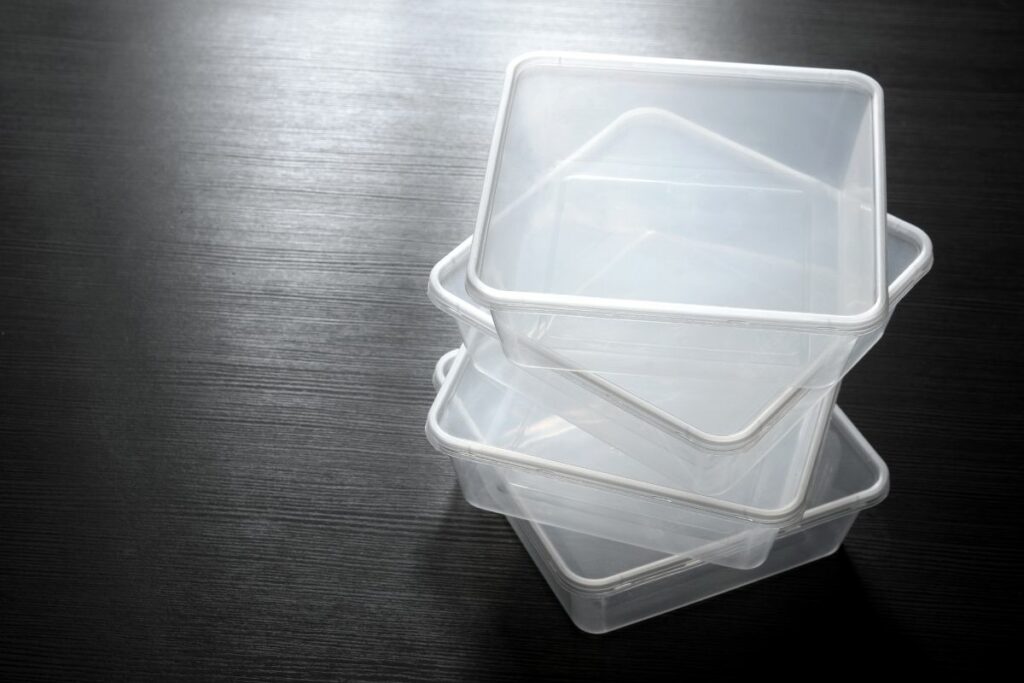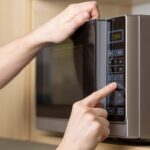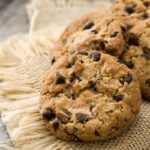Microwaves are a rapid and convenient invention that we can all be thankful for. If you’re looking to heat up your food in an instant then you won’t find a better method than whacking it in the microwave for no more than a few mere minutes.
But when it comes to heating up your food, it’s imperative that you know what materials are microwave safe and which ones aren’t.

Take silver, for example, if you were to place silver-plated containers or plates into a microwave, well, you can expect the microwave to go BANG! And that’s something that nobody wants.
Usually, microwave users will tend to opt for plastic containers, but even these can have their own risks. But first, let’s talk about the different types of plastic containers available.
Pick up any plastic container and you’ll find a number between the value of 1 and 7 written on the underside of it. Each one is a slightly different kind of plastic. Most typically though, it’ll be plastic number 5. So that’s what we’re going to talk about today.
Is plastic number 5 microwave-safe? Does it warp, melt, or change its appearance when subjected to heat? Will harmful chemicals found in plastic number 5 infiltrate your delicious meal? Let’s find out together.
Can Plastic Number 5 Be Microwaved?
Short Answer: Yes!
Plastic number 5 is essentially made up of polypropylene, often referred to as PP, which is safe for microwave use. In fact, it’s actually considered the safest option of all 7 plastics.
PP is heat resistant and so shouldn’t melt or warp while it’s in the microwave, it also will stay relatively cool once heated which means you’re less likely to burn those sensitive fingertips of yours. Pretty good news all-round, really.
Another great thing about plastic 5 is that it doesn’t tend to stain. I’m sure we all know the peril of tomato-sauce-stained containers that just won’t budge no matter how hard you scrub away at them. Well, no such problems with the handy plastic number 5. Yay.
However, with all this being said, you should always remember that plastic number 5, like all plastics, still contains petroleum. And even the very best of all plastics can still allow for some chemicals to leach into your food at high temperatures.
With this in mind, it is always a good idea to discard your plastic once it starts to show signs of general wear and tear or starts to melt. This is because as the plastic becomes more damaged, the probability of the chemicals leaching increases too.
Is Plastic Number 5 Microwave Safe?
Short Answer: Yes!
Because PP is resistant to both colder and hotter temperatures, yes, plastic number 5 is safe to place into the microwave.
Many individuals are wary about placing plastic into the microwave due to its plasticizer substance content.
The compound of BPA is probably the most concerning aspect of placing plastic in the microwave since it can actually have quite negative and harmful effects on the human body.
So the wary is definitely deserved. But you don’t really need to worry too much when it comes to plastic number five because, for the most part, it is considered to be BPA-free. So no nasty chemicals for plastic-5 users!
And on the plus side, it’s also recyclable and affordable making it the perfect choice. But overall, it is its tolerance to temperature that makes it safe for the microwave.
It can tolerate extreme temperatures without so much as a buckle, and it can even withstand freezing too.
How Do You Know That Plastic-5 Is Microwave Safe?

Short Answer: Check for the microwave-safe symbol.
Of course, you don’t need to just take my word for it. If you want to do some investigating for yourself, it really doesn’t take all that much time.
The underside of pretty much any container, as well as most plates and such, will tend to have a microwave-safe symbol (a microwave with three squiggly lines) underneath which represents that the item is safe to be heated in the microwave.
Sometimes, this symbol may also be substituted for a ‘#5’ which indicates that the container is made with polypropylene. This too proves that the dish or container is microwave safe.
CPET #1 plastic is another commonly used microwave-safe option. CPET essentially refers to any plastic that can withstand higher temperatures, so if you see this you are usually good to go.
If you see #1, #7, or APET (E) stated on the underside of your container, this means that it is not safe to be used in the microwave.
Should you be unable to find any markings on your container, you can always try the water test. Simply place a small amount of water in the container and place it in the microwave for no more than 30 seconds.
If the container is hot by this time you should not use if for microwaving food.
Which Plastics Are Microwave-Safe?
Short Answer: #5, #2, #4
So, not all plastics are created equal. And by this, I mean that not all plastics are designed to be placed in the microwave or to heat up food.
This is because many types of plastics contain nasty chemicals that can find their way into your delicious meal. Something that is not ideal.
That is why it is recommended that you only microwave high-density polyethylene where possible. This means that plastic #5 and plastic #2 are the safest or ‘best’ options.
Plastic #4 isn’t quite as good of a choice as the aforementioned plastics, but it is still relatively microwave safe.
However, plastic made from materials such as PVC, polystyrene, and polycarbonate should really be avoided at all costs. These materials contain BPA which can leach into your food and that scenario isn’t a good one by any means.
So steer clear of plastic #3, #6, as well as #7. Not only are these plastics unsafe because of their contents but they also aren’t massively resistant to temperatures and so are likely to warp, melt, or disfigure while being microwaved.
Tips For Microwaving PP5 Plastic Food Containers
Regardless of plastic number 5 being one of the safest options out there, there are still a few risks that you can help to prevent or reduce. So let’s take a look at those now.
- Refrain From High Power – It’s best not to use high power when microwaving plastic regardless of its heat resistance. You should only ever reheat or defrost food in the microwave using plastic. You shouldn’t cook in it. For this reason, it is best to opt for low or medium temperatures when using plastic in the microwave.
- Short Heating Times – It’s best never to leave plastic heating in the microwave for more than around 3 minutes at a time. After this, you have a higher chance of disfiguration.
- Take It Out The Plastic – Once your food has finished heating in the plastic container, you should always transfer it to a dish. This will help to minimize the food to plastic exposure and keep any harmful chemicals out of your scrumptious meal.
- Throw Defective Containers In The Trash – As I mentioned earlier, damaged, chipped, warped, cracked, or defective containers can increase the risk of harmful chemicals transferring into the food you are cooking. Due to this fact, it is best to immediately discard defective plastic.
- Short Intervals – The most effective method for heating food in the microwave is to opt for shorter intervals with regular stirring. This will help not only to reduce the chance of damaging your container but will reduce the likelihood of chemical leaching, and also ensures a more even distribution of heat and cuts down the overall cooking time. Win-Win-Win-Win.
Final Thoughts
So, hopefully, from this article, you have learned that plastic number 5 is actually one of the safest plastics to use when heating food in the microwave. It is essentially BPA-Free and is extreme-temperature resistant making it the perfect choice.
However, as we’ve also learned, that doesn’t mean it is 100% risk-free. You should still take care when using plastic in a microwave to ensure that you don’t allow harmful chemicals to leach into your food.
Though, for the most part, as long as you stick to the tips and tricks outlined in this article, you should be good to go.
The best takeaway from this article is to always check the underside of your container or dish before you place it in the microwave as the symbols stated will let you know if you can or cannot use it in the microwave. It takes all the guesswork out of the equation for you.
Frequently Asked Questions
No – certainly not. You should never use any type of plastic in the oven. While plastic is heat resistant, it can still melt and it likely will in the oven. It is not uncommon for plastic to cause oven fires and so it is not advisable to use it in this appliance.
You’ve heard me say many times throughout this article that plastic #5 is heat-resistant. And that is true. But heat resistance is not synonymous with unmeltable, it just means that it takes a pretty high temperature before it begins to melt.
In this case, that temperature is about 266 degrees Fahrenheit (130 degrees Celsius.)
Not typically, no. Due to its high heat resistance plastic number 5 won’t leach when heated in a microwave. This is why this particular plastic is FDA-Approved for food and beverage heating and storage.
- How To Reheat A Cheesesteak - November 5, 2023
- What Are Three Must Have Kitchen Knives? - September 22, 2023
- How To Protect Edges Of Pie Crust - June 15, 2023








